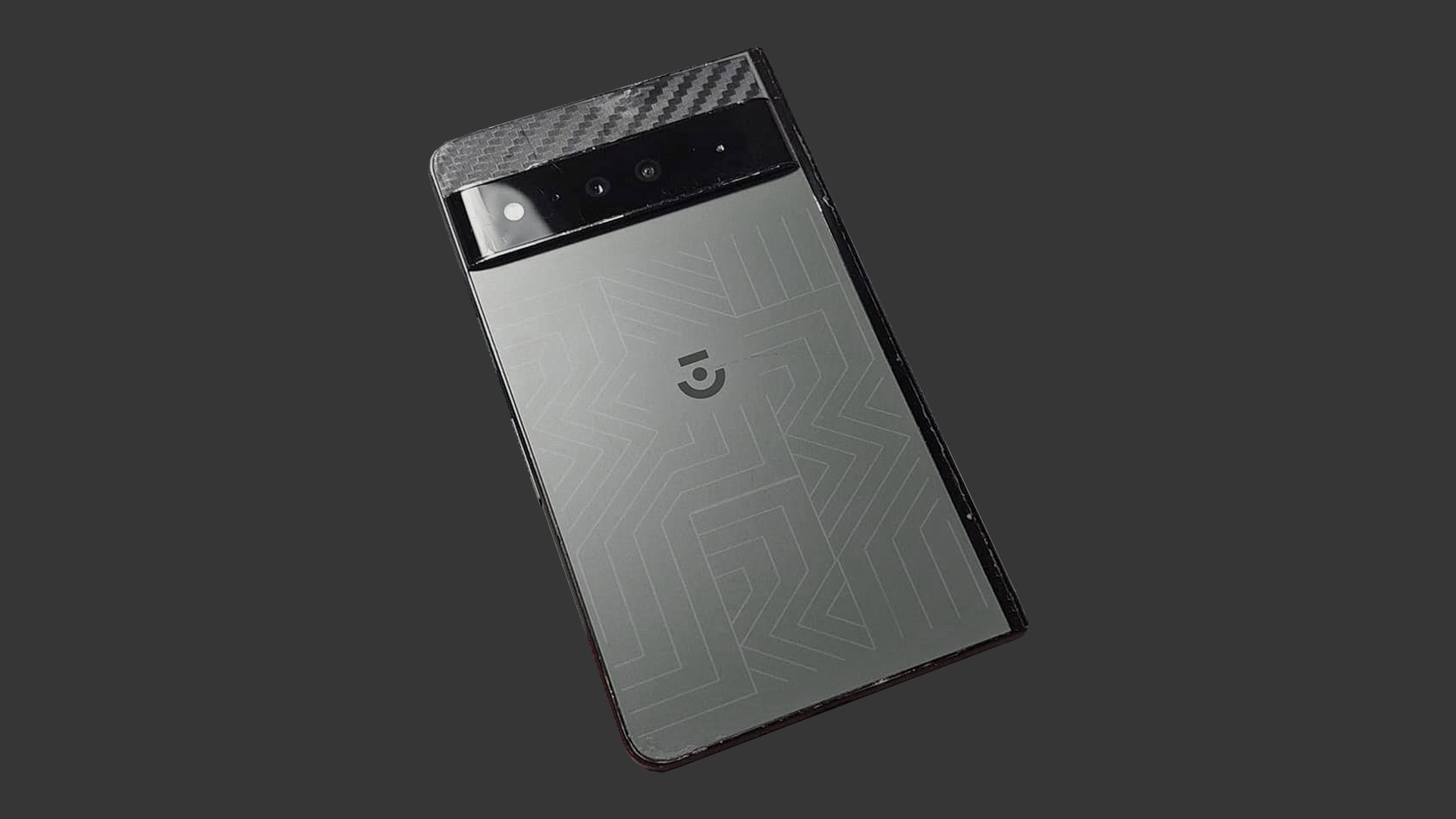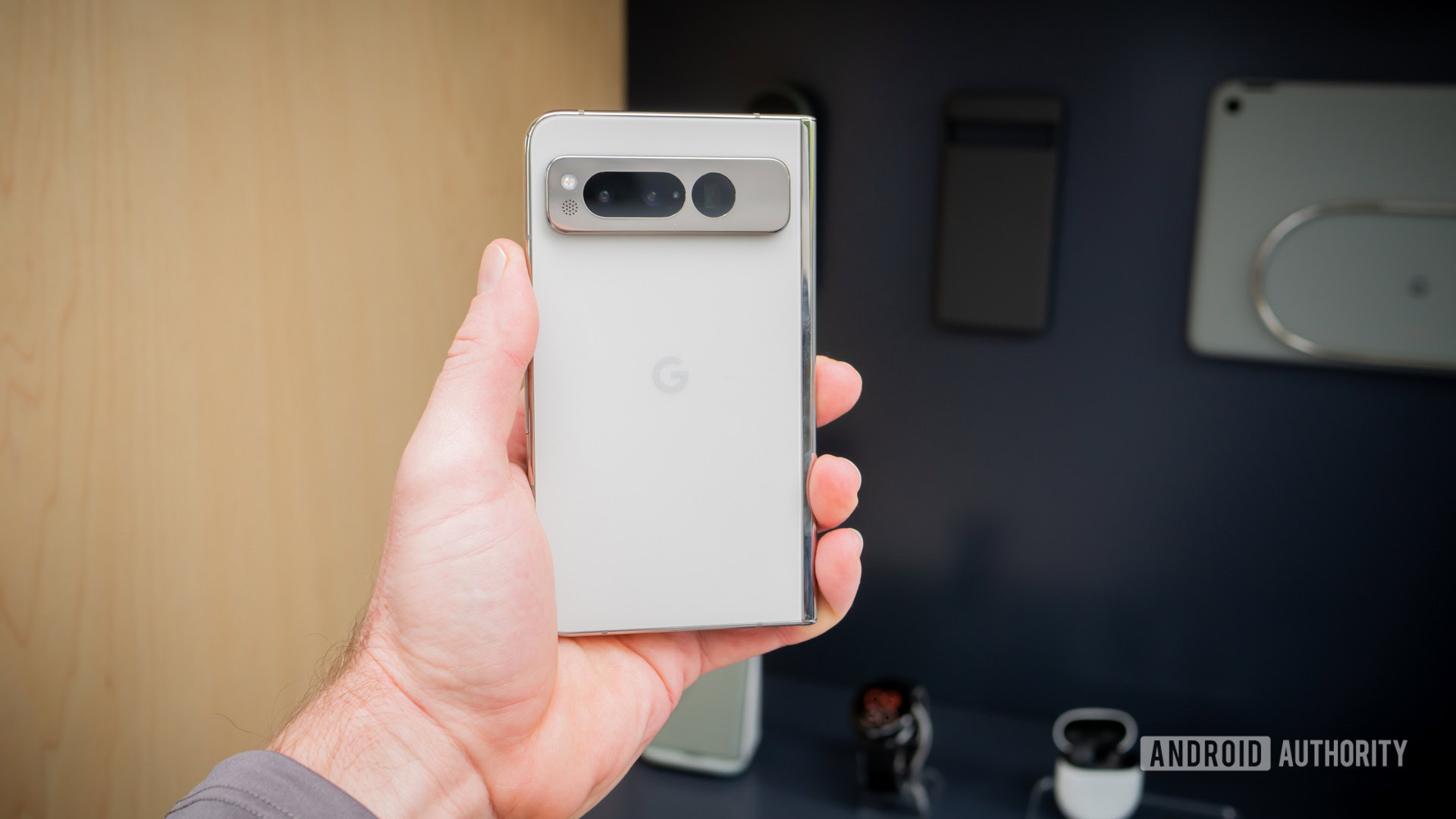Tech
Photos: This is the canceled Pixel Fold that wasn’t good enough for Google

The Google Pixel Fold launched relatively late compared to first-gen foldables from other manufacturers. By the time it was finally released in mid-2023, Samsung had just launched the fifth iteration of its book-style take on the foldable phone (and debuted a second look with the more popular Galaxy Z Flip series), and several other companies had also made their debuts. This situation could’ve been vastly different, though — Google actually had another prototype ready a year before the original Pixel Fold but decided to scrap it because it wasn’t “good enough,” as revealed by Google’s head of design for hardware products, Ivy Ross, in a 2023 episode of the Made by Google podcast.
While the existence of this canceled smartphone is a pretty well-known fact, we’ve never actually seen it in photos or learned the full specs, but that changes today. Photos of what appeared to be a mystery Pixel Fold-like device first emerged in a quiet XDA forum thread (the original images are now gone, unfortunately, but we’ve got copies), prompting muted speculation it was either a fake or an early prototype. Thanks to an anonymous source inside Google, Android Authority can confirm that this is actually our first look at the canceled Pixel foldable codename “pipit” and its specs.
Before we start, it’s worth mentioning that the devices codenamed “pipit” and “passport,” both rumored to have been canceled Pixel foldables, are actually the same device. While they were different projects at some point, they eventually converged into a single device that continued to be called “pipit.”
Familiar design
The canceled Pixel Fold has an eerily familiar look; the only feature clearly distinguishing it from the final version is a (mostly) seamless glass bar running throughout the entire width of the device, closely resembling a Pixel 6. The released Pixel Fold has a smaller camera island made of polished metal, matching the look of the Pixel 7 Pro.
Other than that, the form factor has not changed much. The unusual aspect ratio is the same, the frame and the hinge look about the same, and even the matte back glass was already there (the carbon texture on the top of the device is simply a skin added on by the seller).
(We apologize for the image quality of the photos below. This is the best we’ve managed to salvage from the deleted photos in the thread.)
Unfortunately, the unit being discussed in the thread has a broken inner screen, so we can’t compare it to the first-generation Pixel Fold. However, it’s fair to assume it looked similar, if not identical.
Unremarkable specs
If “pipit” were to be released, it would’ve come a few months after the Pixel 6 series, so obviously, its specs are a generation behind compared to the first-gen Pixel Fold, which built on the basic configuration of the Pixel 7. Instead of a Tensor G2 with Exynos Modem 5300, the device came with the first-generation Tensor and Exynos Modem 5123, which was notable for how many issues it had.
Similarly, the device had an older camera setup. While the first-gen Pixel Fold more closely resembled a Pixel 7a with its upgraded cameras, “pipit” had a much older setup with a rather ancient Sony IMX363, which debuted on the Pixel 3 back in 2018! The other sensors are similarly downgraded, and the telephoto lens is completely absent. I’ve put together a comparison of camera specs below.
| Pixel 6a (codename “bluejay”) | Prototype codename “pipit” | Pixel Fold (codename “felix”) | Pixel 7a (codename “lynx”) | |
|---|---|---|---|---|
|
Primary |
Pixel 6a (codename “bluejay”)
Sony IMX363 (12 MP) – 1/2.55” |
Prototype codename “pipit”
Sony IMX363 (12 MP) – 1/2.55” |
Pixel Fold (codename “felix”)
Cropped Sony IMX787 (48 MP) – 1/2″ |
Pixel 7a (codename “lynx”)
Sony IMX787 (64 MP) – 1/1.73″ |
|
Ultrawide |
Pixel 6a (codename “bluejay”)
Sony IMX386 (12 MP) – 1/2.9″ |
Prototype codename “pipit”
Sony IMX386 (12 MP) – 1/2.9″ |
Pixel Fold (codename “felix”)
Sony IMX386 (12 MP) – 1/2.9″ |
Pixel 7a (codename “lynx”)
Sony IMX712 (13 MP) – ~1/3″? |
|
Telephoto |
Pixel 6a (codename “bluejay”)
– |
Prototype codename “pipit”
– |
Pixel Fold (codename “felix”)
Samsung 3J1 (11 MP) – 1/3″ |
Pixel 7a (codename “lynx”)
– |
|
Selfie (outer) |
Pixel 6a (codename “bluejay”)
Sony IMX355 (8 MP) – 1/2.8” |
Prototype codename “pipit”
Sony IMX355 (8 MP) – 1/2.8” |
Pixel Fold (codename “felix”)
Samsung 3J1 (11 MP) – 1/3″ |
Pixel 7a (codename “lynx”)
Sony IMX712 (13 MP) – ~1/3″? |
|
Selfie (inner) |
Pixel 6a (codename “bluejay”)
N/A |
Prototype codename “pipit”
Sony IMX355 (8 MP) – 1/2.8” |
Pixel Fold (codename “felix”)
Sony IMX355 (8 MP) – 1/2.8” |
Pixel 7a (codename “lynx”)
N/A |
Another area where “pipit” differed from the released Pixel Fold was the outer display. The device had an ever-so-slightly smaller display at 66 x 128mm compared to 67 x 130mm on the Pixel Fold. The resolution also differed slightly at 1,080 x 2,100 pixels compared to 1,080 x 2,092.
| Prototype codename “pipit” | Pixel Fold (codename “felix”) | |
|---|---|---|
|
Size |
Prototype codename “pipit”
66×128 mm |
Pixel Fold (codename “felix”)
67×130 mm |
|
Resolution |
Prototype codename “pipit”
1080×2100 px |
Pixel Fold (codename “felix”)
1080×2092 px |
|
Refresh rate |
Prototype codename “pipit”
10 Hz – 120 Hz |
Pixel Fold (codename “felix”)
10 Hz – 120 Hz |
One thing that surprisingly remained the same, however, is the inner display — it remained a completely unchanged panel. What’s interesting, however, is that Google has developed a prototype version of the device with support for stylus input. While it seems the idea was eventually scrapped — the last prototype including this concept was “PIPIT EVT 1.0 Stylus,” while the other versions of the device made it through to the much later DVT stage — it’s still interesting to see Google was exploring something like this.
Building a good enough device

Kris Carlon / Android Authority
While the Pixel Fold that ended up on store shelves is an upgrade over “pipit,” it seems rather incremental, which raises a question: What went wrong? Why was “pipit” not good enough?
Of course, this is purely speculation, but we can make a good guess by looking at the wider context in which it would’ve been released. “Pipit” would’ve been announced at Google I/O 2022, right with the canceled Pixel Tablet with first-gen Tensor (codename “tangor”; the device that ended up shipping is “tangorpro”) and the Pixel 6a. This would also have made it one of the first devices to run Google’s large screen-optimized version of Android — 12L. It really couldn’t have been a better fit, so why didn’t it happen?
The launch of the Pixel 6 series was a mess. A good part of that was the buggy release of Android 12. While the release of Android 12L fixed some things, it was still nowhere close to being stable. Not only that but a lot of the features were also postponed, making 12L less than what it was supposed to be.
Would you have bought “pipit” if it made it to release?
25 votes
It’s likely Google decided to push both its tablet and foldable a year back to make sure the software was ready and tweak the hardware where necessary. What ended up shipping was still in no way perfect, but it’s likely better than what we would’ve seen if Google had gone forward with “pipit.”
Even canceled, “pipit” was a kind of success: our sources tell us that a lot of Googlers used prototype units as their daily devices, and the first-gen Pixel Fold definitely built upon the hardware and software created for the canceled prototype. Hopefully the upcoming Pixel 9 Pro Fold will continue this generational improvement.








